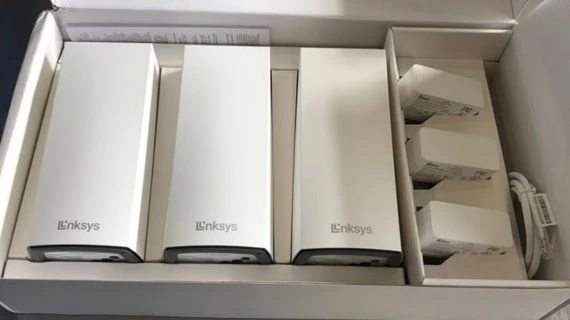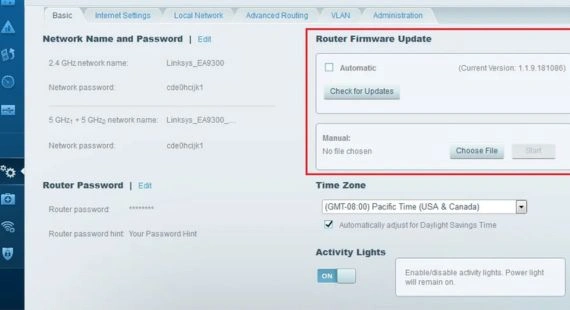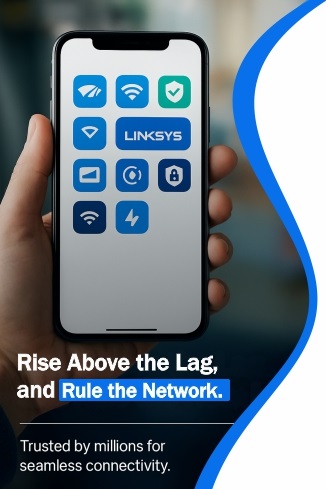AX3000 Mesh Wi-Fi 6 Setup & Troubleshooting Guide
The AX3000 Whole Home Mesh Wi-Fi 6 System aims to provide you the fast, reliable wireless coverage in vast spaces. It is believed that setup and configuration are key to optimal performance.
Therefore, this page tells you how to install, set up your network, and fix problems related to the Linksys AX3000 setup. Given below are clear and useful steps for setting it up, changing settings, or troubleshooting problems with the connection.
Unbox the Linksys AX3000 setup
- A primary router node
- Two nodes that are satellites
- Power adapters (3; 1for each node)
- One Ethernet cable
- A Manual Guide
If the setup seems like a lot complicated at first, don’t worry. Even though they are complicated, setting up mesh networks is wonderfully satisfying once you get the hang of it.

Check list Before the Setup
Perform a bit of work before you plug anything in:
- Check whether your internet is working. Try it out with your present router.
- Take a few minutes to clear your mind. This setup doesn’t take an hour, but if you hurry it, you’ll have to go back.
- Always have your smartphone close by. You will need the app.
Also, think about the placement of the nodes. As the thick walls and metal devices in your home might bother the transmission of WiFi signals from these devices. Also avoid placing them behind TVs or in drawers.
Physical Setup (Wiring & Placement)
A. Link the Main Node (Router Unit)
- Disconnect the modem from power.
- Connect the modem to the Main Node using the provided Ethernet wire. Use the router’s WAN.
- Plug the power adapter into the modem and let it boot for 1–2 minutes. After connecting the power adapter, switch on the router.
- Wait 2 to 3 minutes for the LED light to remain white or blue. This implies it’s time to set it up.
**Tip: Don’t put the primary router in a cabinet; instead, put it in a central, open location of your house. Don’t put metal surfaces or walls in between.
B. Place and power the Satellite Nodes.
- Connect satellite nodes to a power outlet in a room halfway between the router and a corner of your home.
- Wait for the LED light to flash or remain on (brand and model-specific; refer to fast start instructions for color codes).
- The majority of satellites link up with the primary router automatically during the setup process.
If pairing does not occur automatically, you have the option to manually add the satellites during the setup process of the app.
Installing the mobile application is the second step.
A. Get the official app
Get the app that goes with your Linksys Velop setup. It might be:
- The TP-Link Deco app
- App for ASUS Router
- App for Linksys
- The Tenda WiFi app
AX3000 is a standard, and several vendors make their own AX3000 mesh systems.
To be sure you have the right app, check your device or user guide.
B. Sign Up or Log In
- Start the app.
- If you don’t already have a cloud account, you’ll be prompted to get one.
- Give the app the rights it needs, such Bluetooth and Location, so it can immediately discover your Wifi.
C. Get your Wi-Fi network ready
- The app will look for the AX3000 router.
- After you find it, choose the model you want and go on.
- You will be asked to:
- Make up a name for your Wi-Fi network (SSID). For example, “MyHomeWiFi.”
- Make sure your Wi-Fi password is strong. For example, “securewifi2025”
- Pick the sort of Internet connection you want:
- DHCP/Dynamic IP: This is the most frequent kind since it automatically finds the right settings.
- PPPoE—if your ISP offered you a login and password
- Static IP—only if your ISP gives you precise IP settings
- If you’re not sure, pick Auto-Detect (which is what we suggest).
- Save and go on.
D. Add Satellite Nodes if they aren’t already linked.
- Open the app and tap Add a Node or Add a Satellite.
- The app will scan and let you link the devices.
- It will let you know if the node is too far away from the main router. Change position if necessary.
Step 3: Last-Minute Setup Tips
Update the firmware
- The app may prompt you to upgrade the firmware when everything is linked.
- Always accept updates since they make things faster, more stable, and safer.
- The update will take 5 to 10 minutes and could need a reboot.
Optional: Change Settings
You may change the parameters to suit your needs:
- Parental Controls: restrict kids’ devices’ access to the internet
- Guest Network: Let guests use the internet without giving them your primary password.
- QoS (Quality of Service) lets you provide streaming and gaming more bandwidth.
- Blocking devices lets you choose which ones may connect
Step 4: Test and confirm
- Connect your laptop or phone to the newly set-up Wi-Fi network.
- Test the connection by accessing the internet or streaming a video.
- Move about the home; the system should automatically link you to the strongest node nearby.
How to Fix Common Problems?
A Wi-Fi 6 mesh system might nevertheless have problems from time to time. Here’s a list of the typical suspects.
1. Can’t Find the App Router?
- Restart everything, including your modem, router, and phone.
- Turn on Bluetooth and location services (yes, it does matter).
- Uninstall the programme and then reinstall it
2. Is the signal weak on the satellite node?
- Bring it closer to the main node
- Try to sync it again
- Or think about Ethernet backhaul for more dependability.
3. The internet goes down at random times?
- Check for firmware updates
- Adjust DNS settings (Google’s 8.8.8.8 and 8.8.4.4 often work)
- Check for cordless phone or microwave interference.
4. Devices keep switching between nodes?
- Some systems do this on purpose. “Band steering” is what it’s called. But if it’s too forceful, you can turn off quick roaming in the settings.
How to Get the Most Out of Your AX3000 Mesh System?
- Where you put things is quite important. A single wrong node might cause problems with the network.
- Rename your 2.4GHz and 5GHz bands if you can’t connect older devices.
- Plan to restart once a week. Keeps things new.
- Pay attention to the app notifications. Yes, they are bothersome. But useful.
- Use parental restrictions or a guest network judiciously to regulate who can get in and when.
How to Manually Upgrade Firmware?
- Go to the manufacturer’s official website
- Look up the model number
- Get the most recent firmware
- Access the web interface and log in (usually 192.168.1.1).
- Select Advanced, then Firmware Upgrade.
- Upload the file and wait. Don’t disconnect anything during this time.
When nothing else works, reset your mesh system.

A factory reset might assist if the system is being recalcitrant or if you wish to start again.
- Find the reset button (a little hole on the rear)
- Keep it down for 10 to 15 seconds
- Wait until all the LEDs flash or the gadget turns off and on again.
Important: All of your settings will be lost. So don’t reset until you’re ready to start again.
Wrap Up
AX3000 Whole Home Mesh Wi-Fi 6 System is fast, resilient, and dependable, but even the greatest networks require tweaking. This tutorial should help you install, optimize, and repair it.
Suppose nothing goes right? Breaking from everything and walking outdoors for five minutes will cleanse your mind. Return and try again. It’s not always about technology. Sometimes it’s simply the right moment.
FAQs
1. Are my AX3000 mesh systems working?
Ans. If your home’s internet works, all nodes’ LEDs are solid, and the app indicates you’re connected, you’re good.
2. Will the AX3000 operate with my router?
Ans. To avoid problems, it should be utilized as a bridge or access point.
3. Why is one node blinking red or orange?
Ans. That generally signifies a poor signal or that the two devices can’t sync. You may either move the node or couple it again using the app or WPS approach.
4. Is there a way to give some devices more priority so they work faster?
Ans. Most applications let you change the QoS (Quality of Service) settings. You may give some devices, such a business laptop or game console, more bandwidth.

